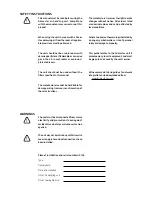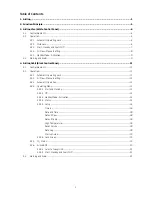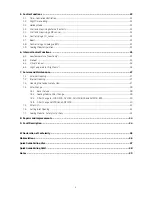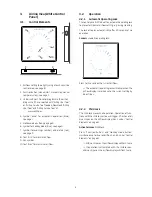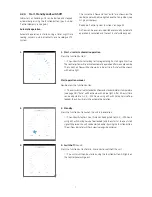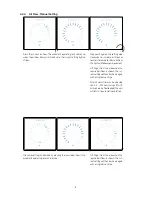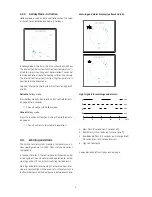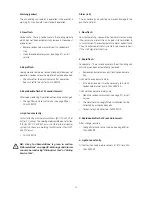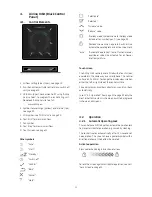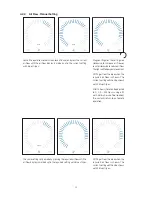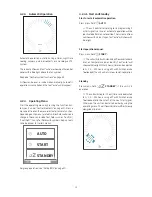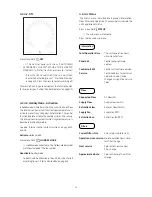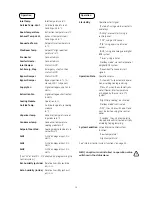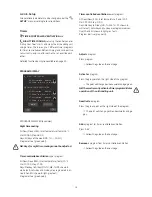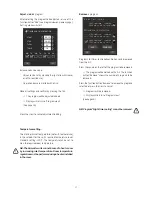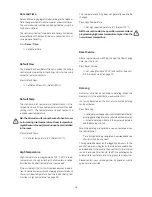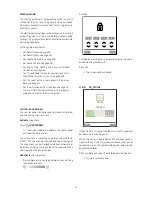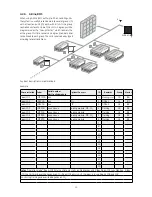
5
10
9
8
12
15
4
5
3
11
2
13
7
14
6
1
10 9
8
12
15
4
5
3
11
2
13
7
14
6
1
1.
Airlinq
Airmaster focuses not only on the air handling unit, but
also on the control system software and operation. Airlinq
is Airmaster’s own unique ventilation control system, which
gives the user and service technician impressive overview
and full control over the indoor climate, plus easy access
to a host of functions, which ensure correct operation of
Airmaster air handling units.
Airlinq consists of a self-explanatory, intuitive control panel,
Airlinq Viva (white) or Airlinq Orbit (black) and an integrated
control unit (AQC L or AQC P), designed to control all func-
tions and equipment in the air handling unit supplied.
Operating the system using the Airlinq Viva control panel
is described on pages 5 to 10, and Airlinq Orbit from pages
11 to 22.
The system can be connected to a PC using Airmaster
programs “Airlinq User Tool” for comfortable operation, or
“Airlinq Service Tool” for programming and maintenance.
Airlinq’s primary functions are:
• Controlling air flow and inlet temperature.
• Manual control.
• Timer-controlled operation using a timer.
• Unrestricted night time cooling for reducing room
temperature during the night.
• Programmed operation using sensors (e.g. a Passive
Infrared (PIR) and carbon dioxide (CO
2
) sensors),
analogue (A-BMS) and digital Building Management
System (D-BMS).
• De-icing function and control of preheating surface
and comfort heater for unit operation at low outside
temperatures.
• Control of cooling module operation at high outside
or room temperatures.
• Monitoring of the unit’s temperature, components
and air flow.
• Alarm functions for maintenance or fault.
• Control of up to 20 individual air handling units via a
single control panel in an Airlinq BMS system, with
sensors connected as required.
• Continuous and timed data log, which can be
transferred to PC.
• PC connection to the Airlinq Viva and Airlinq Orbit
control panels or to the AQC P control unit.
2.
Function Principle
The diagram below shows the basic function of an Airmaster
air handling unit.
Bypass: Fresh air side
Bypass: Exhaust air side
1. Exhaust air (extraction from the room).
2. Exhaust filter M5.
3. Counter-current heat exchanger(s): heat exchangers
effectively transfer heat energy from the exhaust
air to the supply air.
4. Exhaust air fan.
5. Motorised exhaust damper: shuts off the exhaust
side when the unit is stopped.
6. Exhaust air.
7. Outside air:
8. Cooling module (option, not available with all
models): the cooling module reduces the outside
air temperature before the air passes into the air
handling unit.
9. Preheating surface (option): supports the de-icing
function.
10. Fresh air filter M5 (option: F7).
11. Supply fan.
12. Motorised shut-off damper: shuts off the fresh air
side when the unit is stopped.
13. Comfort heater (option): equalises the minor tem-
perature loss in the heat exchanger (pos. 3).
14. Inlet (supply of heater outside air).
15. Modulating bypass (option): the bypass damper is
used to regulate the inlet air temperature.
The air temperature is monitored in the unit before and
after the heat exchanger in the exhaust and supply ducts.
The outside and cooling circuit temperatures are monitored
in the cooling module.
Summary of Contents for AML 100
Page 39: ...39 Notes ...


